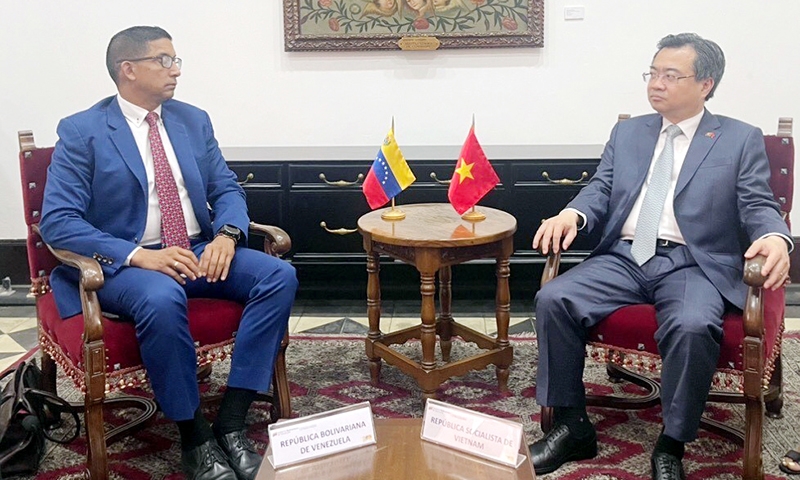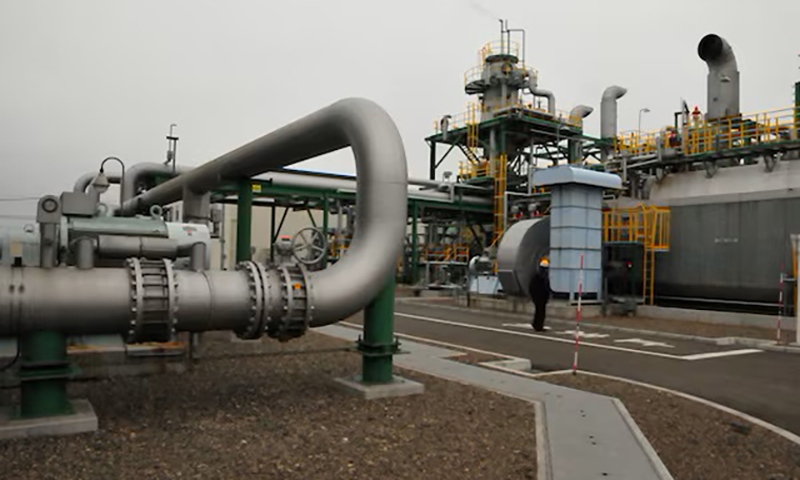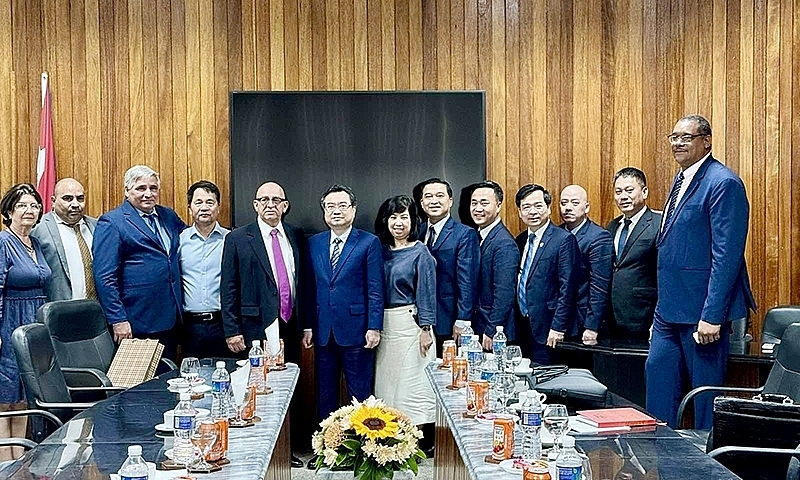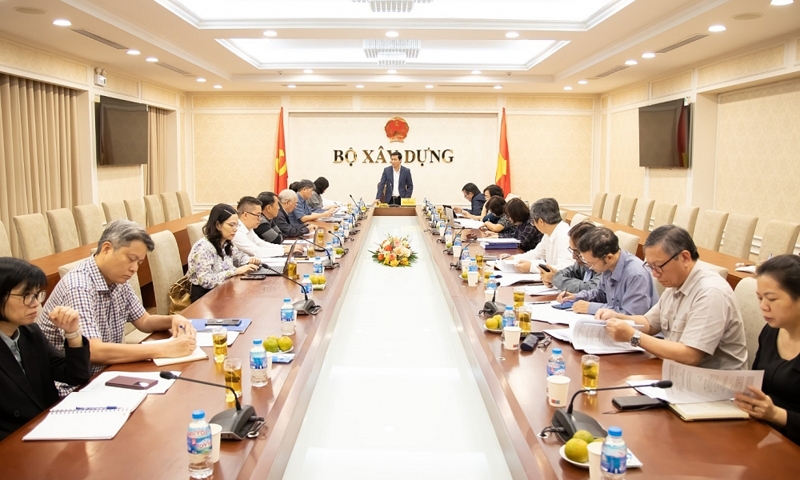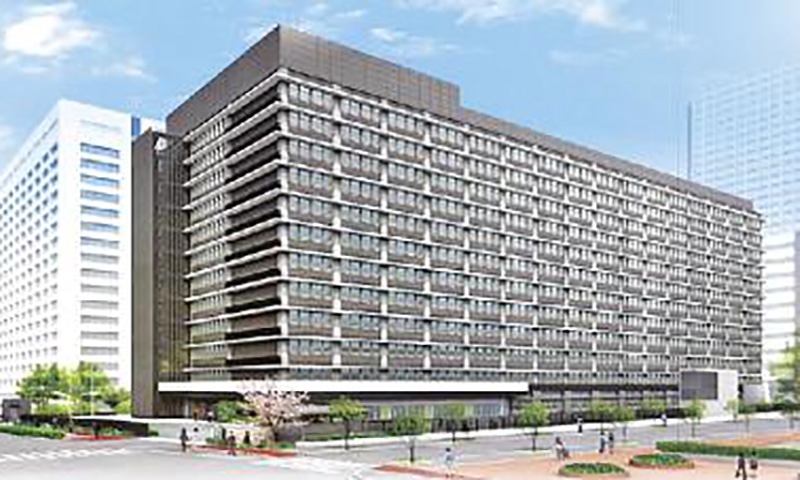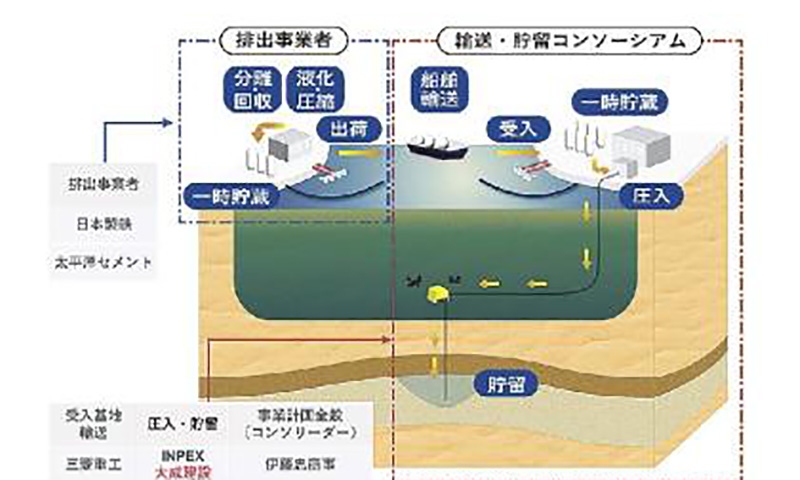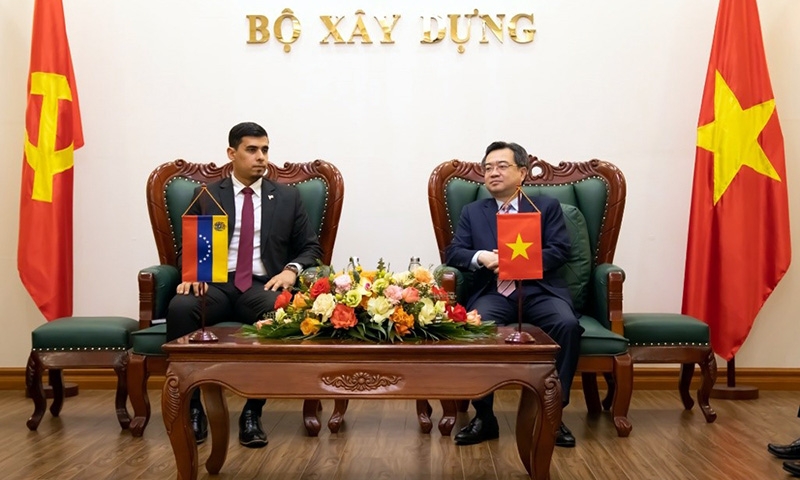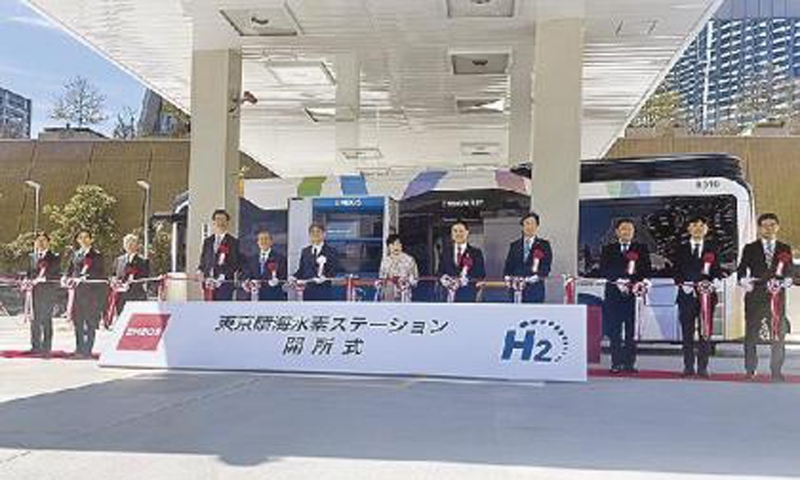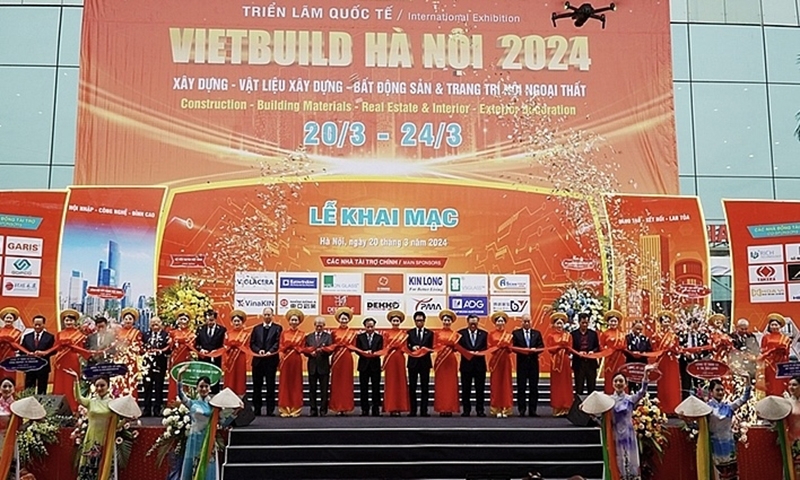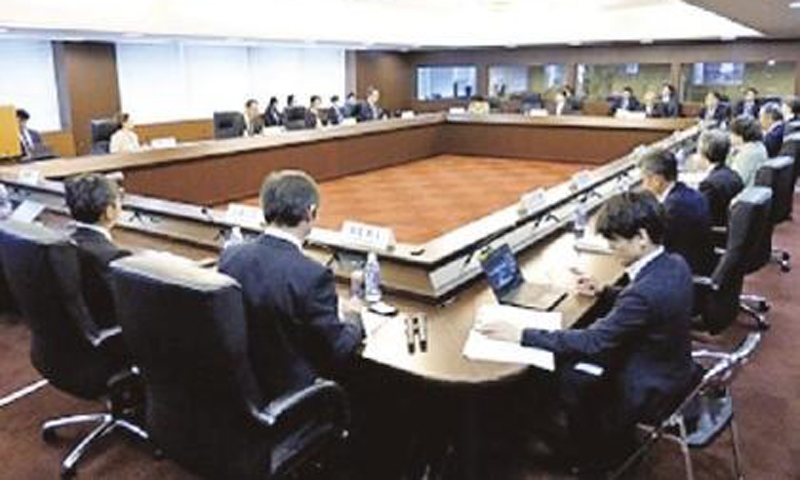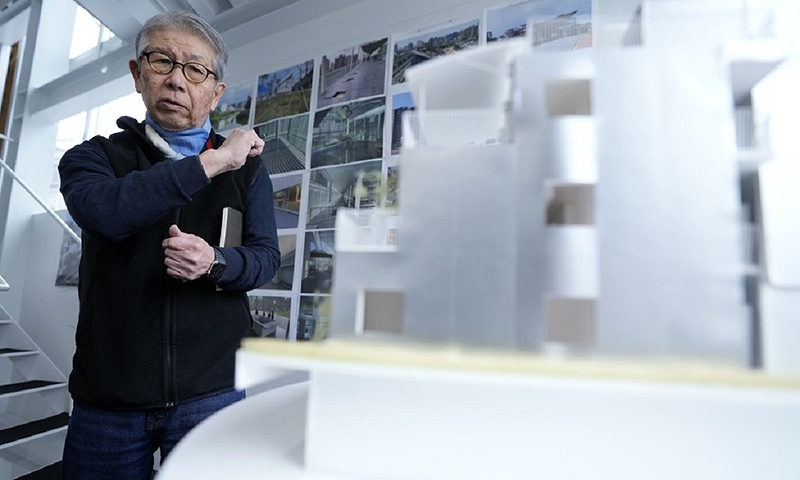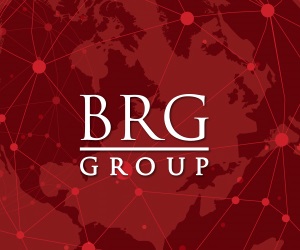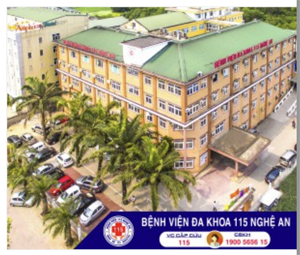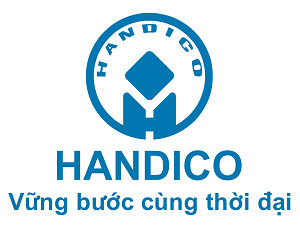(Construction) – The aquaculture, fishing and seafood processing industry is identified as a key economic sector, accounting for 4-5% of GDP and accounting for 9-10% of the total national export turnover. The current problem is that the law implementation of policies on fisheries development still faces many challenges, especially the lack of marine spatial planning.
 |
| Overview of the meeting. |
On August 26, the Science, Technology and Environment Committee of the National Assembly held a workshop on "Solutions to strengthen the enforcement of legal policies on management of aquaculture, seafood processing and control of illegal fishing, not abide by the regulations” in Da Nang city.
Big growth goals, many difficulties to accomplish
According to Mr. Tran Dinh Luan - General Director, Directorate of Fisheries, Ministry of Agriculture and Rural Development, Vietnam has 3,260 km of coastline and an exclusive economic zone of 1 million km2, which is a potential country to develop the aquaculture and fishing industry.
The goal is that by 2030, the growth rate of aquaculture production value will reach 3-4%/year; total production of aquatic products produced in the country of about 9.8 million tons; seafood export turnover of about 14-16 billion USD; creating jobs for over 3.5 million workers...
The goal is that by 2045, fisheries industry will be a modern, sustainable economic trade with advanced management and science and technology levels; is a deep seafood processing center, belonged to the group of 3 leading seafood producing and exporting countries in the world contributing to national defense and security ensurance, maintainance of the independence, sovereignty of islands of the Fatherland.
Regarding to the challenges in implementing legal policies on fisheries, Mr. Tran Dinh Luan said that a number of organizations and individuals did not comply with regulations on environmental protection on conditions for source traceability of farming, violation of means, exploitation license, monitoring equipment, exploitation log and so on. On the other hand, the provisions of the law are still insufficient, not ensuring the suitability and feasibility in practice. The legality of the fishing boundary line at sea, the authority and means sanctioning administrative violations of the local Fisheries Control.
Organization, apparatus, human resources for management, coordination in the implementation of legal regulations, challenges for the requirements of international integration as well as investment funds for infrastructure management, aquatic product processing are not enough and every weak.
In addition, the inadequate regulations in practical implementation of Nitrogen, Phosphorus and Ammonium norms in processing wastewater are too high compared to production practices. Administrative procedures for allocating marine areas for aquaculture, allocating and leasing land, water surface, changing purposes in land use right certificates that are complicated and difficult and complicated. The regulation is not specified in details on the conditions in farming and processing, which also caused difficulties in implementation.
Lack of marine spatial planning
Lack of the regulations on marine spatial planning, identifying the sea area in the islands is a common situation of provinces and localities with large aquaculture production. For example, in Khanh Hoa, with 385km of coastline, more than 200 large and small islands, fisheries are a key economic sector. In 2021, export turnover was about $753 million, accounting for 8.3% of the country's seafood export value. In the first 6 months of 2022, the country's leading seafood export turnover reached 411 million USD, up 50.42% over the same period last year.
Khanh Hoa is also home to many large seafood enterprises, some enterprises with 100% foreign capital, activities including hatchery production, commercial farming of shrimp and fish by high technologies, brand name and quality of export seafood recognized by many countries around the world. However, the report of Khanh Hoa Department of Agriculture and Rural Development also clearly shows: Currently, the planning of Khanh Hoa province in the period of 2021-2030 with a vision to 2050 is in the process of building and not been approved for exploitation leading to the failure to implement the allocation of marine areas for aquaculture to organizations and individuals.
Professor Ha Ton Vinh, representative of Australis Seafood Co., Ltd in Vietnam (from the US) shared that: The company has invested USD 200 million in aquaculture with an area of 200ha in Van Phong Bay. Currently, Australis in Vietnam has the need to increase the investment value to USD 1 billion and is interested in the parallelism between tourism and seafood processing. According to Professor Ha Ton Vinh, seafood processing combined with tourism is an effective model that many countries around the world can do effectively and Vietnam should learn. The planning of Khanh Hoa province should pay attention to this issue and the provincial government should consider special policy options, implement quickly and urgently to attract foreign investors in the area to continue investing billion dollars into Vietnam's seafood industry.
A representative of the Nghe An Department of Agriculture and Rural Development said that the situation of planning and allocating marine areas for the latest aquaculture has not been approved, localities and departments did not have enough bases to develop, plan or develop according to priority groups and regional advantages. The bases for marine area assignment, such as the national marine spatial planning, the master plan on sustainable exploitation and use of coastal resources, have not yet been promulgated. The collection of opinions from agencies and organizations in the case of determining the location, area or marine area without planning overlaps with the request for opinions in the process of appraising the documents on assignment of sea area. That was the main difficulty of the province in aquaculture development.
A representative of the Department of Agriculture and Rural Development of Phu Yen province mentioned that, the sullutions of local aquaculture development should review and update the existing aquaculture master plans and schemes, and at the same time add some high-tech farming areas onshore, using sea technologies to integrate into the provincial planning period 2021-2030 and vision to 2050 as bases for implementation.
Sharing the same opinion, Mr. Tran Dinh Luan - General Director, the representative of the Directorate of Fisheries recommended: "For the Ministry of Natural Resources and Environment, it is necessary to organize and fully implement regulations on land law to remove difficulties in certifying the legality of land and water surface used for aquaculture. Administrative procedures should be reviewed to simplify administrative procedures in the implementation process. The procedures for sea area allocation, environmental impact assessment and implementation of regulations on allocation of marine aquaculture area should be reviewed and simplified to create favorable conditions for people and businesses . The national marine spatial planning should be soon submited to determine the boundary of the sea area at the islands”.
By Khanh Phuong
Theo






